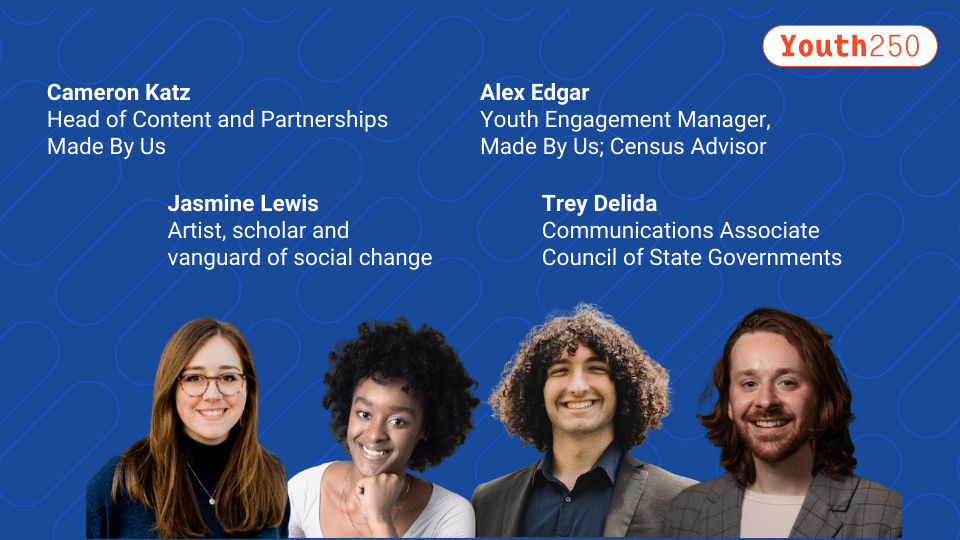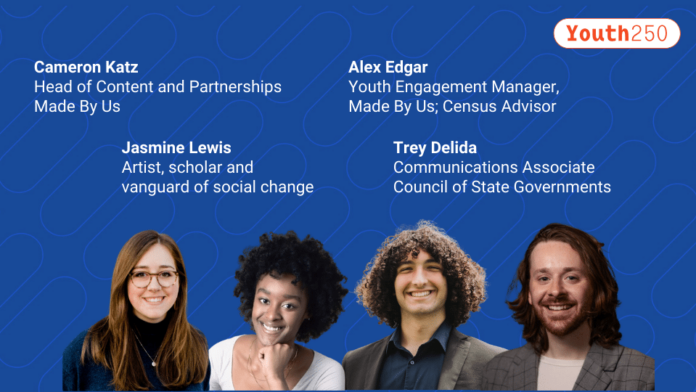
By Jason L. Hanson, History Colorado
O say can you see, by the dawn’s early light,
What so proudly we hail’d at the twilight’s last gleaming,
Whose broad stripes and bright stars through the perilous fight
O’er the ramparts we watch’d were so gallantly streaming?
And the rocket’s red glare, the bomb bursting in air,
Gave proof through the night that our flag was still there,
O say does that star-spangled banner yet wave
O’er the land of the free and the home of the brave?
From Little League games and professional sporting events and from school assemblies to citizenship ceremonies, the lines of “The Star-Spangled Banner” ring out. It is one of the most common touchpoints in American culture, one of the few things capable of bringing Americans of many walks of life together in common purpose. Legendary musicians have put their own stamp on it, but even the most iconic performances are often accompanied by the chorus of people present at that particular event. I must have sung along in those crowds hundreds of times.
Which is why I’m a little embarrassed to admit, especially as an American historian, that it was only last year that I realized that the song is actually a question. Or a series of questions, really.
The national anthem begins with questions because Francis Scott Key composed it from a moment of uncertainty during the War of 1812, when the direction of events was not clear. He was unsure. He had questions. A lawyer by trade and a lyricist by aspiration, Francis Scott Key wrote his patriotic poem from a precarious vantage. The War of 1812 was at a critical point, and he wasn’t sure which way events were headed. The capital had already fallen, the halls of Congress and the White House looted and burned by British troops. Now the crucial port city of Baltimore was under attack, and only the American troops at Fort McHenry stood against defeat. If it were captured, would it mean the end of the American experiment? Key waited through a dark night unsure, listening as the battle thundered nearby, its outcome unknown.
The American troops at Fort McHenry famously withstood the British bombardment. As the morning broke across the bay, they defiantly flew the enormous American flag made by Mary Pickergill as the British Navy withdrew from the attack and abandoned its plans to control Chesapeake Bay.
Processing his emotions on paper, Key composed the lines that would become the national anthem. He began the first verse of “The Defense of Fort M’Henry” with the fears that had haunted him through that long night: Does our flag, the symbol of American freedom, still wave? And is it still flying over the type of nation we aspire to be? The land of the free and the home of the brave. A place where all of us have the right to life, liberty, and the pursuit of happiness. A place where we celebrate the strength in diversity embodied since 1782 in the inscription on the Great Seal of the United States E Pluribus Unum (“Out of Many, One”).
We’re not used to thinking of the anthem this way. The comedian Trevor Noah recently joked that “The Star-Spangled Banner” is the only national anthem in the world that can be punctuated by a muscular expletive at the end of every line. And the tone does grow more muscular and triumphalist in subsequent verses, perhaps reflecting the euphoria coursing through Baltimore as the British sailed away. But it is that first verse, with its questions and uncertainty, that Americans adopted in song over the years. Those eight lines, set to the popular British tune “Ancheron in Heaven,” resonated with subsequent generations of Americans who made it the de facto national anthem, singing along to it at baseball games, Fourth of July celebrations, and other events sporting or patriotic (or, increasingly, both), until Congress and President Hoover made it official in 1931.
Since my belated realization, the experience of singing the national anthem has changed for me. It has become less rote and more meaningful as I consider how to answer its questions. And I’ve come to believe that the genius of “The Star-Spangled Banner” is its invitation to each generation to answer those questions anew for themselves. At Gettysburg, Lincoln called our commitment to realizing America’s founding ideals the “unfinished work of democracy,” and he charged all Americans with continuing to advance it.
Today, the approaching national Semiquincentennial in 2026—marking the 250th anniversary of the signing of the Declaration of Independence—offers the best opportunity this generation will have to answer those questions by affirming that the American story is founded upon the most self-evident of the Declaration’s truths: that we are all created equal. Only when we start from the premise that all of our stories are included on equal terms in our shared American history will we clearly be able to see how we got to now. And, as so many partisans in the recent battles over history curriculums can attest, the story we tell about how we got to now largely determines how we answer the anthem’s questions about who we are and want to be.
Despite suggestions to the contrary, which seem to find new appeal if not novel expression among certain segments in every generation, an inclusive understanding of the American identity is not a new idea.
In fact, insisting on inclusion in equitable ways is the very core and essence of the American ideal. Since the days of shouting “no taxation without representation,” the idea of America has been an aspiration to expand the sphere of liberty so that all Americans are represented.
I believe that there is not a more important project right now than helping Americans embrace an inclusive identity that can remain durable for generations to come.
Our well-documented discord—spurred by the recognition that the American promise of previous generations was inadequate for a nation that had always been more pluribus than unum, and amplified by opportunistic actors that see benefit in our disunity—has pushed our political system into crisis and, in many ways, destabilized the entire world.
It’s also not a new observation to note that this aspiration, far from ever being fully realized, has fallen tragically short in so many ways. Mary Pickergill sewed the Star-Spangled Banner itself with help from younger assistants that included a 13-year-old Black indentured servant named Grace Wisher. Francis Scott Key enslaved Black men and women throughout his life, as did many of the men who enshrined those aspirational American values in founding documents like the Declaration of Independence we’re preparing to commemorate. That lofty Declaration also stooped to complain of “merciless Indian savages,” making clear that the founders did not envision the land’s Indigenous inhabitants as part of their new nation.
Expanding the sphere of liberty has never been automatic or without strife. It needs powerful agents in every generation to ensure it continues to grow and does not contract. At various times in our history, this has meant standing up and removing our hats—and sometimes it has meant taking a knee—to contemplate what is asked of us by “The Star-Spangled Banner.” But those who oppose the effort to include everyone who has called this place home as part of America’s story have always stood in opposition to the American promise. Like historical NIMBYs (Not In My Backyard) who want to shut the gates (or the history books) behind themselves, they fret as if America is a zero-sum proposition where inclusion somehow means corresponding subtraction.
In states around the country and at the national level, Americans are laying the groundwork for an inclusive commemoration of our Semiquincentennial in 2026. At the same time, Coloradans will also mark our state’s Sesquicentennial, the 150th anniversary of our entrance into the Union. As the Centennial State, we are especially lucky in Colorado to be the only state observing twin anniversaries—our Sesquisemiquincentennial. (It’s easy to say with a little practice!)
Colorado’s unique commemoration speaks to our unique history within the nation. When we think of the events of 1776 in Colorado and the West, more comes to mind than the Revolution. It is nearly a century after the Pueblo Revolt of 1680 drove Spanish colonizers out of what was then called Nueva Mexico in the most successful Indigenous resistance in North American history, what some call the “First American Revolution.” After the “Reconquista” brought the Spanish colonists back to what is today the American Southwest in 1692, they continued to explore the region. In 1776, as delegates were debating independence in Philadelphia, Fathers Dominguez and Escalante were leading a Spanish scouting expedition up the Western Slope of the Rocky Mountains through what is today Colorado. They added to Spanish knowledge at the time more information about the tribes who called this place home: the Ute, the Comanche, the Kiowa, the Apache, the Arapaho, the Cheyenne, and others.
In Colorado, the state legislature worked with Governor Polis to create the America 250 – Colorado 150 Commission, housed at History Colorado, to guide the commemorative effort in ways that empower every Coloradan to participate in the Sesquisemiquincentennial. We’re making plans to seize this opportunity to explore our shared history as we think about the ideals that Francis Scott Key thought defined us, and that we have aspired to for generations. The Commission is developing memorable public experiences in which communities can come together and celebrate Colorado, supporting a variety of educational efforts that engage inclusively with our shared history and create a lasting legacy well beyond 2026, and supporting local communities in their efforts to create moments of unity and lasting impacts. And—because it’s something that only Colorado can do—we’re organizing teams to climb every single one of our fourteeners (mountain peaks above 14,000 feet) on the Fourth of July in 2026.
Every time I’ve heard “The Star-Spangled Banner”—from my first experiences at Little League baseball games to the Super Bowl pregame to the naturalization ceremonies for new citizens we host at the History Colorado Center in Denver—it’s been asking me what type of society I want to live in, and what I’m willing to do to secure it. It took me decades to hear the question clearly. As America’s Semiquincentennial approaches, it’s asking all of us.
Jason L. Hanson is the Chief Creative Officer at History Colorado, the state historical society. He is also a member of the America 250 – Colorado 150 Commission, and Colorado’s Deputy State Historian.

